BTK
-
Official Full Name
Bruton agammaglobulinemia tyrosine kinase -
Overview
Brutons tyrosine kinase (Btk) is a member of the Btk/Tec family of cytoplasmic tyrosine kinases. Like other Btk family members, it contains a pleckstrin homology (PH) domain and Src homology SH3 and SH2 domains. Btk plays an important role in B cell devel -
Synonyms
BTK;Bruton agammaglobulinemia tyrosine kinase;AGMX1, IMD1;tyrosine-protein kinase BTK;ATK;PSCTK1;XLA;B-cell progenitor kinase;agammaglobulinaemia tyrosine kinase;tyrosine-protein kinase BTK isoform (lacking exon 14);dominant-negative kinase-defi
Recombinant Proteins
- Human
- Rat
- Chicken
- Mouse
- E.coli
- HEK293
- Insect Cells
- Sf9 Cells
- Mammalian Cells
- Sf21 Cells
- In Vitro Cell Free System
- Yeast
- GST
- His
- Avi
- Fc
- Flag
- Non
- DDK
- Myc
Background

Fig1. BTK Domains and activating tyrosinde phosphorylation sites. (Alexandra Chirino, 2023)
What is BTK protein?
BTK (Bruton tyrosine kinase) gene is a protein coding gene which situated on the long arm of chromosome X at locus Xq22. The protein encoded by this gene plays a crucial role in B-cell development. Brutons tyrosine kinase (Btk) is a member of the Btk/Tec family of cytoplasmic tyrosine kinases. Like other Btk family members, it contains a pleckstrin homology (PH) domain and Src homology SH3 and SH2 domains. The BTK protein is consisted of 659 amino acids and its molecular mass is approximately 76.3 kDa.
What is the function of BTK protein?
BTK is a non-receptor tyrosine kinase that plays a critical role in B-cell receptor signaling. The functions of BTK include: BTK plays a regulatory role in the development and function of B cells, and it can affect the survival, migration and secretion of immune factors of B cells, so as to regulate immune response. BTK is a key molecule in the B cell receptor (BCR) signaling pathway, and when BCR binds to its ligand, BTK is activated and activates downstream signaling, promoting B cell maturation, proliferation, and antibody production.
BTK Related Signaling Pathway
BTK plays a central role in B-cell receptor signaling, and when BCR binds to an antigen, BTK interacts with other proteins in the BCR complex through its SH3 domain and is activated. Activated BTK further phosphorylates downstream targets, including PLCγ2, PKCβ, MAPKs, and NF-κB, triggering a series of signaling cascades. In addition to the BCR signaling pathway, BTK is involved in signal transduction of FC-γR and Toll-like receptors (TLRS), which also play important roles in immune cell activation and inflammatory responses.
BTK Related Diseases
Mutation or abnormal activation of BTK is associated with a variety of B-cell malignancies, such as chronic lymphocytic leukemia (CLL), B-cell acute lymphoblastic leukemia (B-ALL), and B-cell lymphoma. In addition, BTK has been associated with X-linked immunoglobulin deficiency (XLA) and autoimmune diseases such as rheumatoid arthritis.
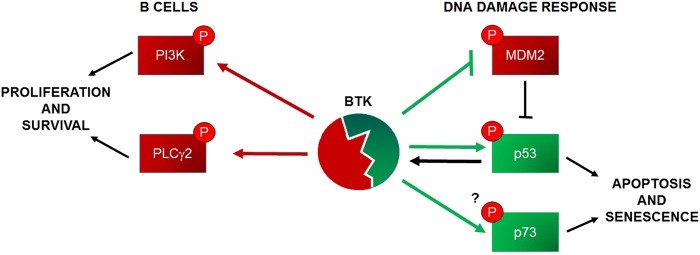
Fig2. The pleiotropic roles of BTK in cancer. (Miran Rada, 2018)
Bioapplications of BTK
Because of BTK's key role in B-cell malignancies and immune diseases, small molecule inhibitors targeting BTK have been developed to treat these diseases. These drugs can inhibit the activity of BTK, thereby affecting the proliferation, differentiation and survival of B cells, providing a new strategy for the treatment of these diseases.
Case Study
Case study 1: Wenjia Ren, 2023
Lung cancer is one of the most lethal malignant tumors in the world. Non-small cell lung cancer (NSCLC) is the most common pathological subtype. However, the molecular mechanism of NSCLC progress is still unclear. The researchers extracted the expression data of the Bruton's tyrosine kinase (BTK) gene in NSCLC tissues from the TCGA database. The results of paired t-test showed that the BTK gene was significantly underexpressed in NSCLC tissues. To further verify the above results, they detected the expression of the BTK gene in NSCLC cell lines A549, H1299, and H1650 at the RNA and protein levels by real-time fluorescent quantitative polymerase chain reaction and Western Blot analysis, respectively. The results showed that BTK was low expressed in NSCLC tissues and cells. More importantly, the expression of the BTK gene is also significantly related to the patient's age, gender, tumor range (T), lymph node invasion (N), tumor stage, and prognosis, and its expression level gradually decreases with the progress of the disease. It is speculated that BTK may be an independent prognostic factor of NSCLC. Overexpression of BTK can significantly inhibit the proliferation, migration, and invasion of NSCLC cells and can block the G0/G1 tumor cell cycle, indicating that overexpression of BTK can inhibit the growth, migration, and invasion of NSCLC cells.
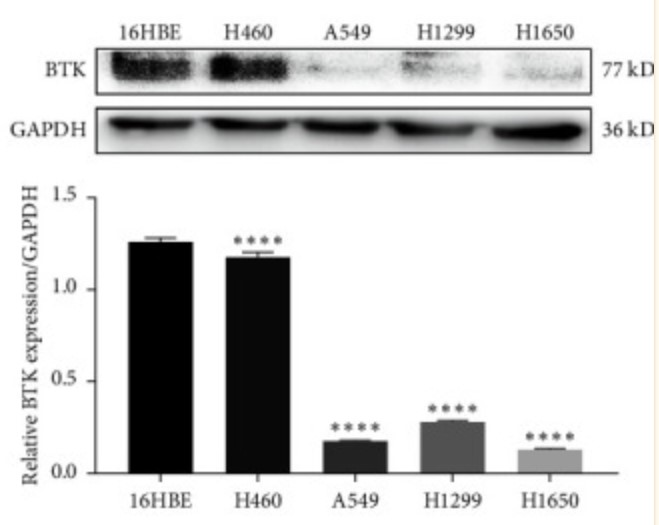
Fig1. Western blot analysis of BTK expression levels in normal bronchial epithelial cell 16HBE and non-small cell lung cancer cell lines.
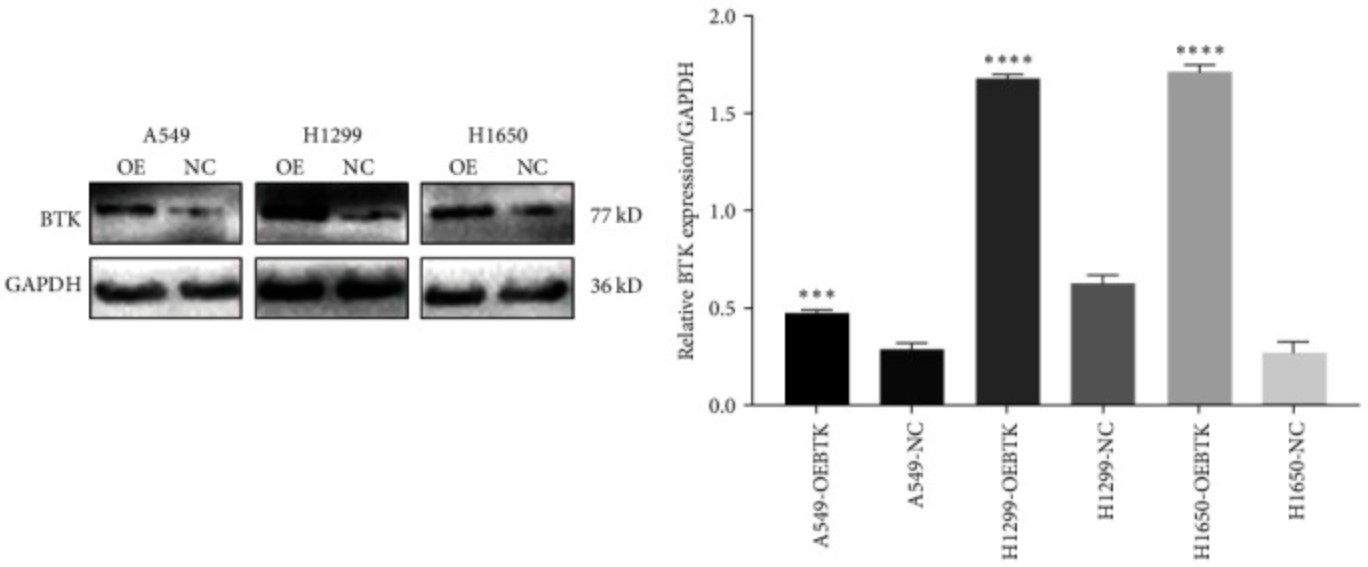
Case study 2: Chenglong Yue, 2017
Malignant glioma is the most common primary brain tumor in adults and has a poor prognosis. However, there are no effective targeted therapies for glioma patients. Thus, the development of novel targeted therapeutics for glioma is urgently needed. In this study, the researchers examined the prognostic significance BTK expression in patients with glioma. Furthermore, they investigated the mechanism and therapeutic potential of ibrutinib in the treatment of human glioma in vitro and in vivo.
These data demonstrate that high expression of BTK is a novel prognostic marker for poor survival in patients with glioma. BTK-specific inhibitor ibrutinib effectively inhibits the proliferation, migration and invasion ability of glioma cells. Furthermore, ibrutinib can induce G1 cell-cycle arrest by regulating multiple cell cycle-associated proteins. More importantly, they found that BTK inhibition significantly blocks the degradation of IκBα and prevents the nuclear accumulation of NF-κB p65 subunit induced by EGF in glioma cells.
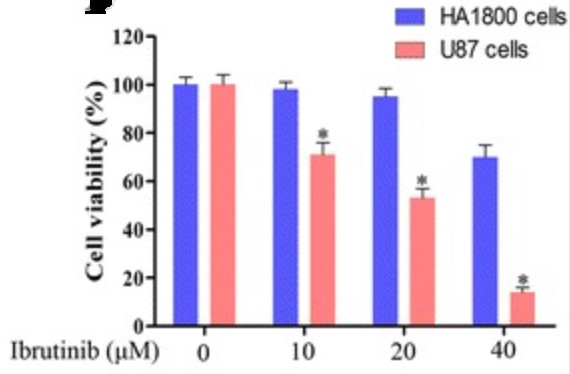
Fig3. HA1800 and U87 cells were treated with the indicated concentration of ibrutinib for 72 h. The cell viability was measured using CCK-8 assays.
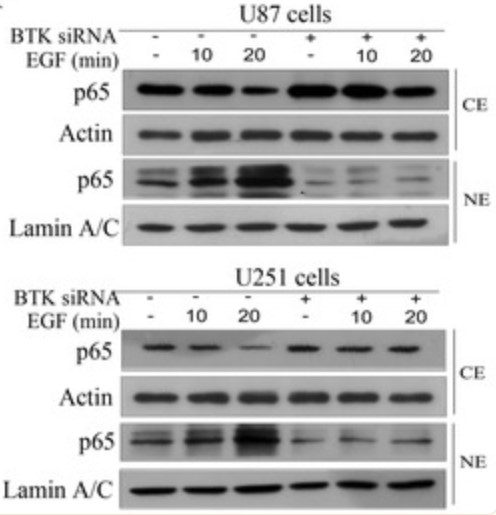
Quality Guarantee
High Purity
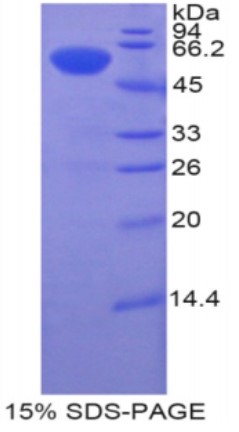
Fig1. SDS-PAGE (BTK-1966H) (PROTOCOL for western blot)
.
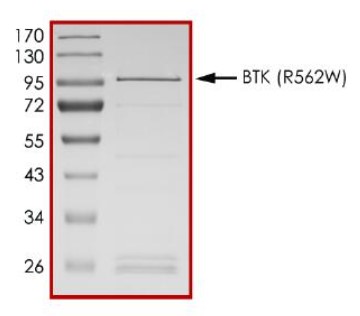
Fig2. SDS-PAGE (BTK-06H) (PROTOCOL for western blot)
Involved Pathway
BTK involved in several pathways and played different roles in them. We selected most pathways BTK participated on our site, such as NF-kappa B signaling pathway,Osteoclast differentiation,Platelet activation, which may be useful for your reference. Also, other proteins which involved in the same pathway with BTK were listed below. Creative BioMart supplied nearly all the proteins listed, you can search them on our site.
| Pathway Name | Pathway Related Protein |
|---|---|
| Fc epsilon RI signaling pathway | MS4A2,AKT1,GRB2,MAPK12,PIK3R2,FCER1G,HRAS,LAT,MAP2K6,MAPK11 |
| B Cell Receptor Signaling Pathway | DOK3,PIK3AP1,PIK3CD,ACTR3,CMTM3,CDK6,CDK4,RASGRP3,CRK,HRAS |
| Osteoclast differentiation | MAP3K14,TNF,PLCG2,IKBKB,RELB,FHL2,IFNGR1,FYN,GRB2,PIK3CA |
| nodeficiency | PTPRC,CD40,Cd79a,CD3E,AICDA,CD40LG,ICOS,DCLRE1C,RAG1,CD8B |
| Platelet activation | LCP2,FGG,VASP,PRKG2,PIK3R5,MAPK3,MAPK11,ARHGAP35,COL27A1,Adcy4 |
| NF-kappa B signaling pathway | TNFRSF11A,TICAM2,Ccl21c,CCL4L2,BCL2A1A,PTGS2,MYD88,PLAU,CCL21B,CD40 |
| Primary i | CD8B,RFX5,RFXAP,CD40,IKBKG,IL2RG,TAP1,LCK,RAG2,ICOS |
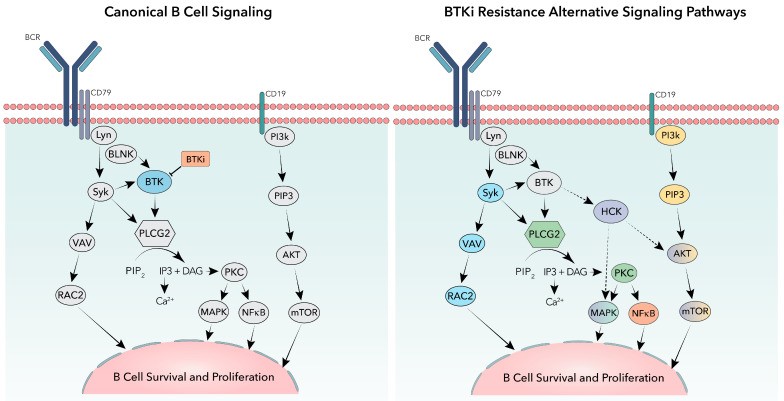
Fig1. Canonical and alternative signaling pathways in B-cells. (Alexandra Chirino, 2023)
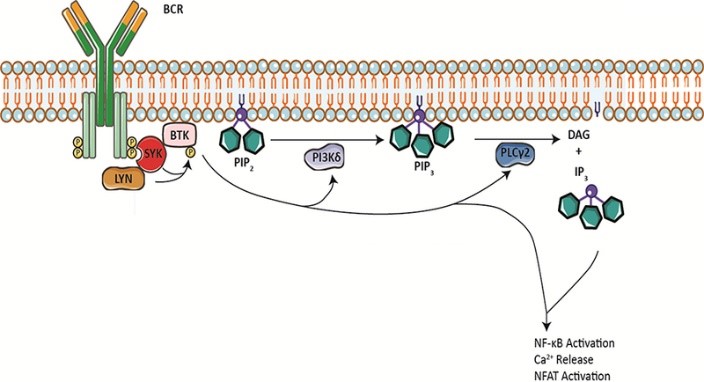
Fig2. BTK is engaged downstream of the constitutively activated B cell receptor (BCR) in CLL. (Benjamin L Lampson, 2018)
Protein Function
BTK has several biochemical functions, for example, ATP binding,identical protein binding,metal ion binding. Some of the functions are cooperated with other proteins, some of the functions could acted by BTK itself. We selected most functions BTK had, and list some proteins which have the same functions with BTK. You can find most of the proteins on our site.
| Function | Related Protein |
|---|---|
| protein tyrosine kinase activity | FGFR1A,MET,LYN,FGFR3,KDRL,ERBB4A,EPHB4B,ZNF143B,KIT,LCK |
| identical protein binding | USP4,PKD2L1,PVRL2,NUFIP1,C1QTNF6,KDM6A,APIP,LZTFL1,SHARPIN,VPS41 |
| NOT receptor binding | TXK,ITK,LGI1,BMX,TEC,STYK1 |
| metal ion binding | S100T,ZNF335,UGP2,SMPD4,ZNF213,ZFP516,PRKCD,ZNF773,ZNFX1,ADIPOR2 |
| phosphatidylinositol-3,4,5-trisphosphate binding | COMMD1,ARHGAP9,FAM21C,OGT,AKT1,JPH2,INPPL1,GAB2,ARAP2,ASAP1 |
| ATP binding | DDX24,DNAJA3,XRCC3,DGKZ,EIF2B2,TAOK2,PMVK,CDKL5,ABCB6A,CSNK1D |
| protein binding | ZNF230,PLD1,TPRKB,CTLA2B,PPP1R2P9,UBQLN4,C11orf67,CCDC28B,ZFP110,SERINC1 |
| non-membrane spanning protein tyrosine kinase activity | ZAP70,FYNA,JAK2B,RIPK2,ITK,PTK2AB,TEC,TNK1,ZNF143B,FGR |
Interacting Protein
BTK has direct interactions with proteins and molecules. Those interactions were detected by several methods such as yeast two hybrid, co-IP, pull-down and so on. We selected proteins and molecules interacted with BTK here. Most of them are supplied by our site. Hope this information will be useful for your research of BTK.
GTF2I;BLNK;ebi-1521221;MAL
Resources
Research Area
Related Services
Related Products
References
- Sagiv-Barfi, I; Kohrt, HEK; et al. Therapeutic antitumor immunity by checkpoint blockade is enhanced by ibrutinib, an inhibitor of both BTK and ITK. PROCEEDINGS OF THE NATIONAL ACADEMY OF SCIENCES OF THE UNITED STATES OF AMERICA 112:E966-E972(2015).
- Feng, MY; Chen, JY; et al. Macrophages eat cancer cells using their own calreticulin as a guide: Roles of TLR and Btk. PROCEEDINGS OF THE NATIONAL ACADEMY OF SCIENCES OF THE UNITED STATES OF AMERICA 112:2145-2150(2015).



